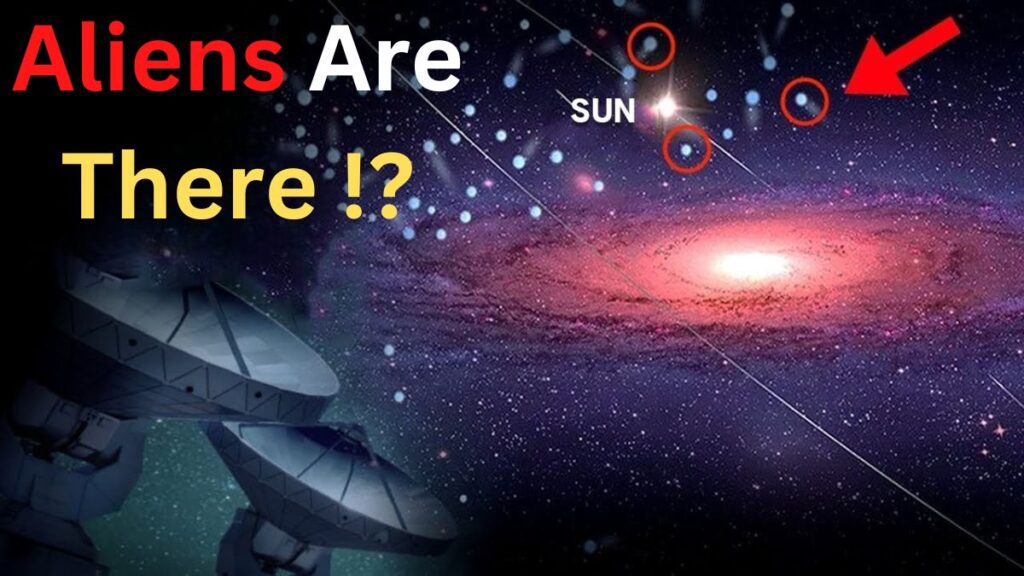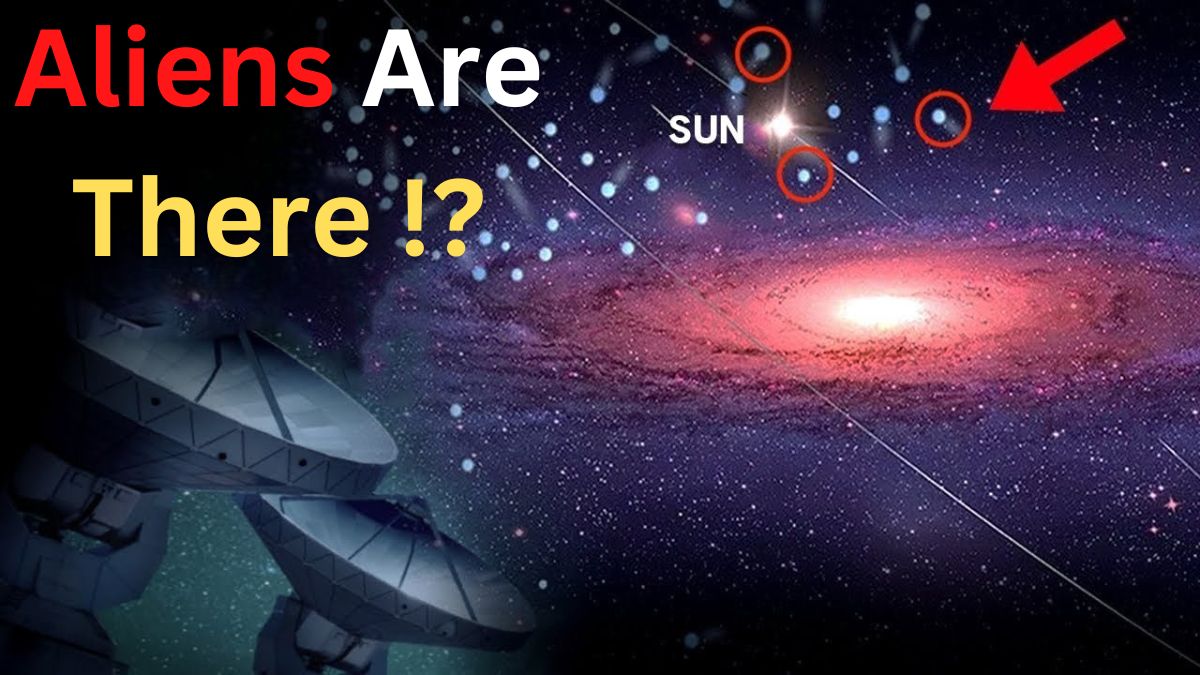
Mysterious signals from the far reaches of the cosmos have puzzled researchers for many years.
So-called fast radio bursts are the strangest of these extremely short impulses that simply don’t fit what we know of the Universe on Earth.
Astronomers have been listening to every signal in space for decades.
They want to hear what the beginning of the universe sounded like, they want to know what the expansion of space sounds like, and of course they hope to receive a signal at some point that expresses something like ‘hello, is there anybody out there?
‘ Ever since we humans have been looking and listening to space, we have been obsessed with one question: are there other creatures and civilizations out there, and are they possibly seeking contact with us as much as we are seeking contact with them?
Do you love astronomy and the search by NASA and other space agencies for extraterrestrial life?
Then stay tuned with us and subscribe to our channel now, because we’ll keep you up to date on the latest discoveries astronomers have made.
We’re going to move on to an exciting discovery that Chinese researchers made just this year.
A radio telescope in China receives a strange signal.
The Chinese are a superpower that has been underestimated on the international space and astronomy stage.
This vast country with an ancient history is coming on strong when it comes to solar system exploration, but also radio telescope technology.
In the province of Guizhou, in southern China, the 1600-foot aperture spherical telescope, currently the largest radio telescope on Earth, is in operation.
The radio telescope, nicknamed Sky I, has been systematically searching the cosmos for electromagnetic signals since 2016.
In addition, it is officially used to search for signals from extraterrestrial civilizations.
The Chinese cosmologist Zhang Tanji is the scientific director on site.
In June of this year, his team detected narrow-band electromagnetic signals that were clearly different from any previously recorded signals.
The signal stood out among thousands of data collected during observations of exoplanets or planets outside our solar system.
The signal, which was distinctly different from all other soundtracks captured so far, could be evidence of an extraterrestrial civilization.
The Chinese scientists published this information in a ministry publication.
Shortly after the signal was discovered, a few hours after its appearance, the publication, originally formulated in a very clear and optimistic way, was deleted.
Nevertheless, by that time, the news had already come to the attention of numerous journalists and research teams from around the world.
A corrected statement finally said that it was also possible that the strain signal was merely an electromagnetic disturbance.
Unofficial sources, meanwhile, went on to admit that Zhangtanji’s team of researchers had already detected two unusual signals in 2020.
Zhang is not just any researcher in China.
The specialist in computer technology and radio signals, who among other things holds a chair at the Canadian University of Calgary, is considered the greatest alien hunter in China.
Researching alongside Zhang are numerous experts from the Chinese Academy of Sciences, Beijing Pedagogical University, and the University of Berkeley in California.
After the promising publication, a veritable run on Zhang and his research team broke out.
The Chinese media speculated for weeks about the truthfulness and explosive nature of the discovery, but many more curious inquiries from news agencies have so far gone unanswered by the Chinese Ministries.
The world is still puzzling over the mysterious signal that Zhang and his team were able to observe.
Fast radio bursts among the strangest signals researchers can pick up in space are rarely occurring and very short and fast frequency waves.
Rational explanations for these phenomena are so-called fast radio bursts.
These are short, lightning-like radio signals that strike the antennas of telescopes on Earth from vast distances of the cosmos.
For a long time, the origin and the formation of these signals were a mystery to researchers.
Possible explanations were scenarios from colliding neutron stars to the collapse of dying stars, but none of these explanations really fit the picture.
Researchers in Australia were finally able to determine that the radio flashes most likely originated far out in space at a distance of several billion light years.
At the time of their formation, the universe was only between 6 and 9 billion years old, thus the time of origin lies a whole 8 to 11 billion years back.
Fast radio bursts last only a few milliseconds and appear only very rarely in the overall picture of radio signals from space.
Pulsars produce unusually large amounts of energy and emit irregular radiation, but whether pulsars are really the source of the strange signals received by radio telescopes on Earth is often doubted among experts to this day.
Fast radio bursts or FRBs are basically the same signals, except that no specific cause is attributed to this phenomenon.
The confusion surrounding fast radio bursts has gone so far in the past that researchers have examined telescopes and recording technologies on Earth to rule out errors and terrestrial technology.
Eerie pulses from space back in January of this year, the International Center for radio astronomy research in Australia was able to capture another strange radio signal.
The Murchison wide field array consists of 256 antenna arrays, each with 16, 210-foot-high ultra-wideband antennas, covering a total area of 21,500 square feet.
This team, led by astronomer Natasha Hurley-Walker, had been using a novel algorithm to scan the sky for conspicuous radio signals, and found what they were looking for by 2018.
The research group had located 71 high-energy pulses that clearly came from the same source.
The origin of the signals could be traced back about 4,000 light years, thus these signals originated from the wider cosmic neighborhood, so to speak.
Natasha Hurley-Walker commented on the find with the words ‘there is nothing in the sky that behaves like this.
This is how the astronomer expressed that there is so far no known celestial object or cosmic event that emits signals of this kind.
Not only the length and repetition frequency of the signals are strange, but also the long pauses between the signals do not follow any algorithm that indicates a natural phenomenon.
The pulsating signals possess a length of less than one minute and had an interval of 18.18 minutes.
For 30 days, the radio pulses came punctually, like clockwork.
After 30 days, there was sudden silence.
Nothing was heard for 26 days, then the unknown source transmitted again for 30 days without a single interruption.
After another 30 days of signal emission, the source fell silent, and this radio silence continues to this day.
The Australian researchers published their discoveries in the science journal Nature, among other publications.
In a personal statement, the lead researcher described her observation as ‘almost eerie’ Signals like a heartbeat discovered also this summer.
Astronomers at the U.S Massachusetts Institute of Technology picked up repeating radio signals from a galaxy several billion light years away.
The scientists have not yet been able to determine the exact location of the radio waves.
So far, the publications follow the usual explanation models according to which the signals could be emissions of neutron stars.
These signals occurred continuously in contrast to the observations of the researchers from Australia and lasted up to three seconds alone.
This circumstance called past explanations into doubt because the signals from collapsed giant stars last only a few milliseconds.
In a statement, the scientists announced that within about three seconds, there were several bursts of radio waves which repeated themselves every 0.2 seconds in a clear periodic pattern.
The sound, according to the researchers, sounded like a beating heart.
Thus, this signal, the first to occur periodically, was reminiscent of an organic, living source.
So, what do these discoveries mean?
Now, you’re probably asking yourself what these discoveries mean for us.
We can only repeat at this point that at the present time, nobody knows exactly how these discoveries are to be interpreted.
The only thing researchers can say at present with certainty is that all of the signals are highly unusual.
Nevertheless, this fact alone cannot be used to draw a firm conclusion about the existence of extraterrestrial civilizations.
Even if it should turn out that some of these signals were sent out by living beings, it would be questionable whether we would ever be able to answer or make contact.
Some of the signals are estimated to have traveled thousands or millions of years before reaching us.
It would be impossible to say whether these civilizations even exist today or when, and if a response signal would be received.
We humans of course not only receive signals but also send them out.
In 1974, the Arecibo mission was the first radio signal message sent into space with the intention of reaching an extractor.







![“[God DNA] Proves Presence of God” says Scientists God DNA](https://spaceupper.com/wp-content/uploads/2021/10/God-DNA.jpg)